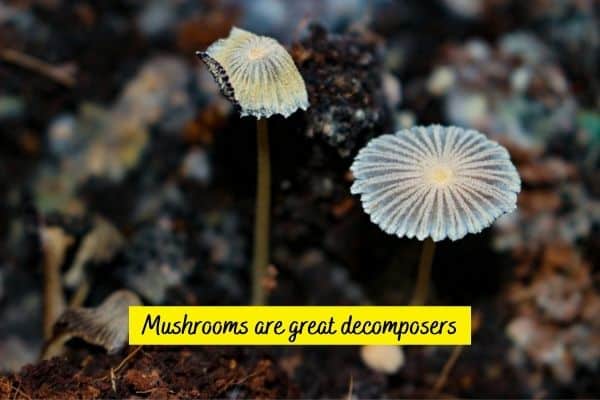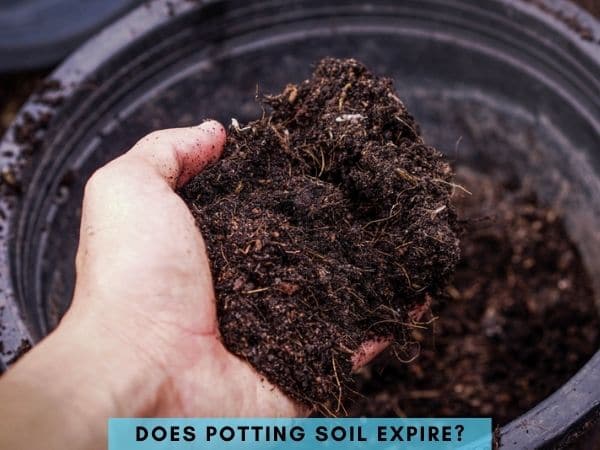Compost vs. Potting Soil: Key Differences
Gardeners popularly use compost and potting soil to grow plants. Both compost and topsoil are sometimes terms used interchangeably, considering they have an almost similar purpose.
However, compost and potting soil have distinct differences that can help you to tell them apart. They vary in composition and general gardening application.
In a nutshell, compost is a by-product of bacterial activity on organic matter while potting soil is a product of a carefully selected blend of different materials that may include compost.
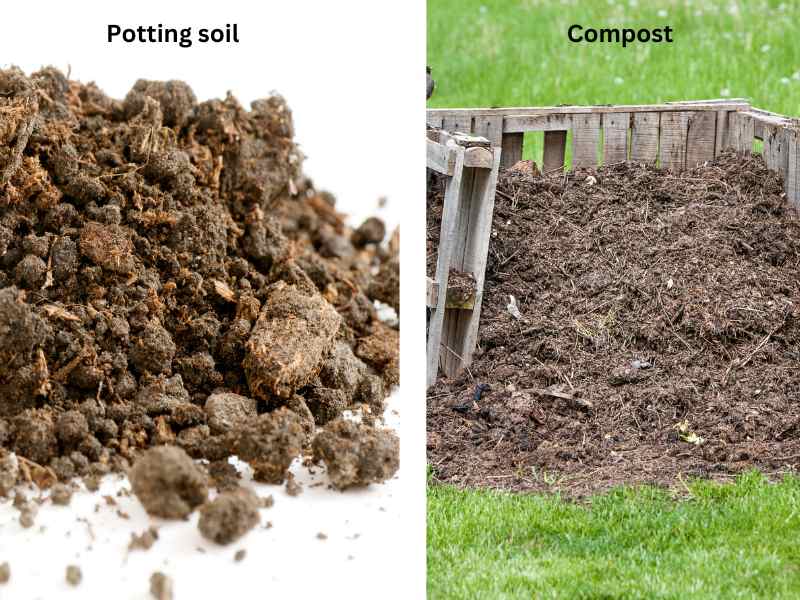
What is compost?
Compost is a mixture of organic materials that have been decomposed and recycled as a source of nutrients and soil amendment. It is made by decomposing plant matter such as leaves, grass clippings, and kitchen food scraps like citrus peels, banana peels, vegetable remnants, and more.
During the composting process, bacteria, fungi, and other microorganisms break down organic matter into a rich, dark substance full of nutrients.
Expert tip: Any soil that we’re looking at is going to be 50% soil, which is sand, silt, clay, and a little bit of organic matter, and the other 50% is air and water. The main ingredients, which are sand, silt, and clay, are present in soil but absent in compost.

Compost improves the structure, aeration, and nutrient level of soil and promotes healthy plant growth. It is also an effective way to reduce waste by recycling organic materials that would otherwise be discarded in landfills.
What is potting soil?
Potting soil is a type of soil mix specifically formulated for use in containers such as pots, planters, and raised beds. It is often made from a blend of ingredients, including peat moss, perlite, vermiculite, compost, pine bark, and other organic matter.
Potting soil may or may not contain soil and is different from potting mix, which is a sterilized soilless mix.
Potting soil is designed to be lightweight, well-draining, and nutrient-rich, making it ideal for growing plants in containers. It is often used for growing vegetables, flowers, herbs, and other plants indoors or outdoors.
Expert tip: Although good potting soil and compost look quite the same (black, fluffy, and soft), they’re very different chemically. Potting soil may contain a certain percentage of ground-up rock, while compost is all organic matter. So, they’re very different from that perspective.
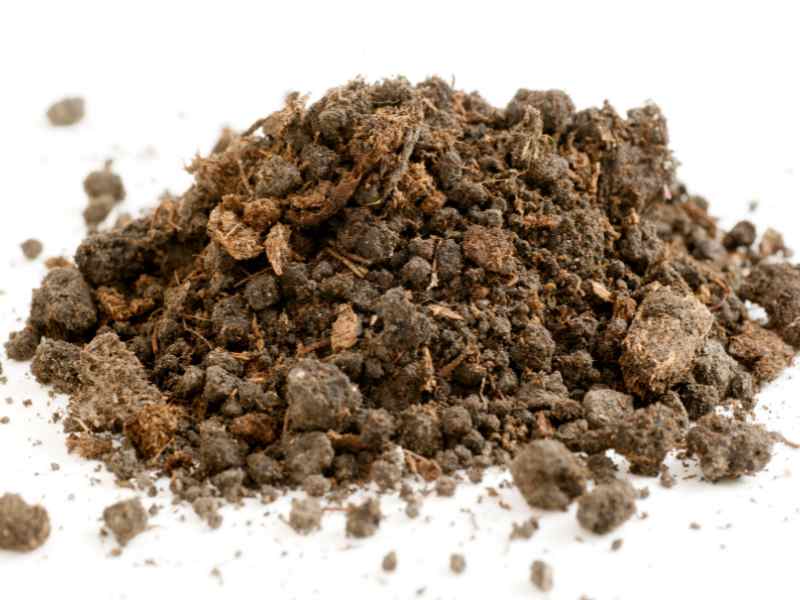
Unlike regular soil, which is heavy and can become compacted in containers, potting soil is designed to be easy to work with and allows for proper drainage and aeration.
It is also free of weeds, insects, and diseases, which makes it ideal for starting seeds and transplanting seedlings. However, potting soils often have expiry dates on them.
In addition to providing a suitable growing medium for plants, potting soil also helps to anchor plants in containers and prevent them from being easily tipped over.
You can use potting soil in small backyard gardens and patios.
A difference between potting soil and a potting mix composition is that a potting mix does not contain soil. In contrast, potting soil may include a small quantity of regular soil (often sand) to ease drainage. Potting mix has a lighter composition when compared to potting soil.
Compost vs. Potting Soil – Key Differences
Compost and potting soil have unique variations that make it easy for one to tell them apart. Each growing medium has a distinct composition, application range, and several additional attributes.
Here are the key differences between compost and potting soil:
Composition
Compost consists of decaying organic matter such as fruit peelings, damp leaves, etc. Potting soil is purposefully made using a combination of selected garden soils, peat moss, vermiculite, and other organic compounds, each with a specific purpose.
The composition of compost varies depending on the type of material used. You can get compost from decaying organic matter, animal manure, animal remains, and composting technologies (popular with industrial-based products such as Milorganite). Compost contains a healthy blend of macro and micronutrients, organic matter, and bacteria.
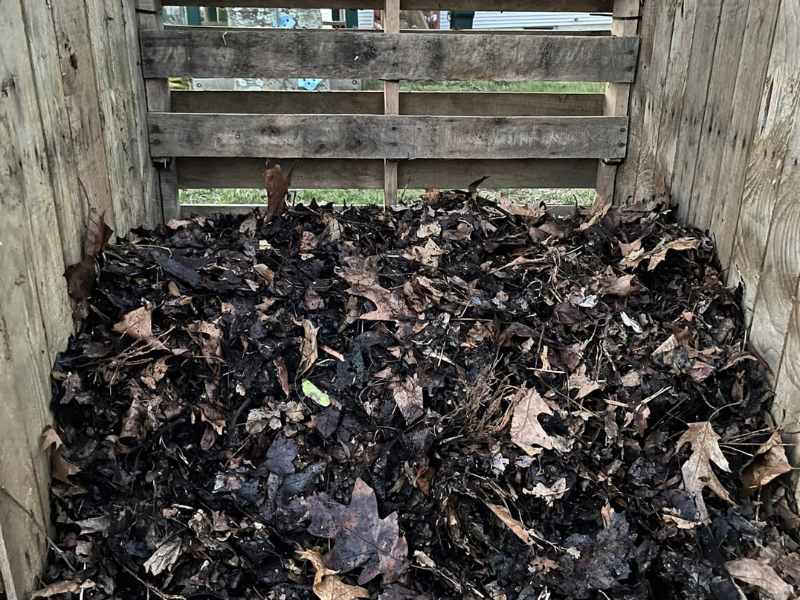
On the other hand, potting soil comprises regular soil, peat moss, coir fiber, and other components. Most potting soil blends also undergo sterilization to kill harmful pathogens and pests.
Expert note: When it comes to finished compost, we start with things we recognize, like banana peels, grass clippings, and so on. We mix all that up and go through a process until we get to a point where our eyes don’t see that original material anymore, and we see this black material. While this is now called finished compost, the process of composting continues over a long period until nitrate molecules are released slowly to feed plants.[2]
Nutrient quality
Compost is rich in essential nutrient compounds that promote soil enrichment. Different compost types have varying amounts of nutrients, but their concentration depends more on the primary ingredients.
You can also expect a healthy ratio of carbon, nitrogen, water, and oxygen with most compost mixes. Animal-based compost types contain significant concentrations of calcium, magnesium, zinc, and other micronutrients that aid and support plant growth.
Industrial composts might have trim levels of heavy metals (such as lead), which can occasionally disintegrate in the soil after continuous application but are not harmful in small amounts.
On the other hand, potting soil has a high nutrient quality, making it ideal for indoor and small outdoor spaces. An advantage of potting soil is that you have more control over the nutrients you add to the composition. Coir fiber, for instance, is a by-product of coconuts used in a potting soil mix to improve drainage.
Most potting soil mixes contain significant quantities of nitrogen (N), potassium(K), and phosphorus(P) which are crucial to maintaining plant health. Compounds such as perlite, peat moss, and vermiculite might lack important nutrient qualities, but their application is better suited to improving soil structure and drainage.
Additives in potting mix
Some gardeners add small amounts of slow-release fertilizers to improve their potting soil nutrient composition. These additives can disintegrate and make old potting soil unusable if not used within its stipulated shelf life.
You can add some compost to your potting soil mix, especially if you are preparing one from home (or if you notice signs of nutrient deficiency with your plants).
Overall, compost contains a higher nutrient quality than regular potting soil, especially over a long period, as it continues to break down and release more nutrients for plants.
Drainage
Mixing your soil with compost can have positive or negative consequences depending on the soil type, compost variant, and density.
Compost is often used to improve soil drainage for clay and other soil types prone to waterlogging. It can also improve the moisture retention capacity of sand and other quick-draining soils.
A study found that “a 3-inch layer of leaf compost rototilled to a 6-inch depth increased water holding capacity 2.5 times that of native sandy soil.” (Maynard 1994)[1]
Author note: As the microorganisms break down the organic matter in the compost, they create these little channels, pores, and spaces within the soil that allow air and water to move through much more easily, which is important for plant growth.
Potting soil is already well-draining
Gardeners prefer potting soil over regular soil because they are assured of a well-draining growing medium. Peat moss, perlite, and vermiculite improve the mixture’s ability to percolate excess water.
Perlite, for instance, is a type of volcanic glass that improves soil aeration and drainage and prevents the soil from becoming too compact.
Some potting soil mixes also contain small quantities of coarse sand to improve drainage. A blend of the different potting soil materials produces a balanced growing medium suitable for houseplants, container vegetable gardens, and raised beds.
Overall, while compost can have ideal drainage characteristics, it is more liable to have drainage issues than a potting soil mix.
Microbial activity
Microbial and bacterial activity in compost and potting soil differs. Microbes are essential for healthy soil, considering they consistently break down complex compounds (including organic matter) into the final nutritious molecules that plants readily absorb.
Compost has a higher microbial activity than other growing mediums because composting relies on the microbes to disseminate organic matter and turn it into nutrients such as nitrogen, potassium, zinc, phosphorus, and others.
You can also find small creatures, including mites, worms, and others, within your compost mix, which could also benefit your plant. On the downside, compost can also contain harmful pathogens that could negatively affect plants.
On the other hand…
Potting soil has a significantly smaller concentration of microbes as most potting soil mixes undergo sterilization to eliminate microbes residing within the mixture.
However, the level of microbial activity depends on the composition of your potting soil mix and its intended purpose.
You are more likely to have a higher microbe concentration if you mix your potting soil with compost, garden soil, and other unsterilized compounds than synthetic fertilizers and other soil enrichment agents.
Here’s a summary of the differences between compost and potting soil:
| Compost | Potting Soil |
| Compost is formed as a by-product of the decomposition of organic matter. | Potting soil is created by blending peat moss, perlite, and other soil improvement compounds. |
| Compost is a rich, natural source of nutrients for plants. | The nutrient quality of potting soil depends on soil-enriching additives such as fertilizers and compost. |
| The drainage capacity of compost is subject to underlying factors such as soil type, compost composition, and how much is applied. | It has excellent drainage capabilities compared to most ordinary garden soils. |
| Compost is rich in microbes and bacteria that aid in the composting process. | Potting soil has limited bacterial and microbial activity. |
FAQ
Can I use compost instead of potting soil?
While compost is a nutrient-rich organic material that can benefit plants, it is generally not recommended to use it alone as a substitute for potting soil. Compost lacks the necessary structure and drainage for potted plants to thrive, while potting soil is specifically formulated to provide these essential elements and nutrients for potted plants. If you want to incorporate compost into your potted plants, mix it with potting soil at a ratio of 1:4 to ensure proper drainage and structure while still providing the necessary nutrients from the compost.
When should you use compost?
You can use compost as an organic alternative to improving the soil’s nutrient quality when mulching and as a measure to improve soil drainage.
Compost is more appropriate for outdoor spaces such as lawns and gardens considering it takes time to mature or ‘mature.’ You can apply small amounts of compost in indoor growing containers as a top dressing and slow-release fertilizer.
When should you use potting soil?
You can use potting soil as a growing medium for indoor plants and small vegetable gardens. Potting soil is also ideal for starting seedlings and other young plants before transplanting. The compound contains specially selected materials that ensure improved drainage and soil aeration.
Can you mix compost with potting soil?
You can mix potting soil with compost to improve the soil’s nutrient quality. An ideal ratio of mixing potting soil with compost is 4:1 to ensure you get the best of both without affecting your potting soil’s consistency and drainage.
Video
References
- [1] Maynard, Abigail. (2013). Seventy Years of Research on Waste Composting and Utilization at the Connecticut Agricultural Experiment Station. Compost Science & Utilization. 2. 13-21. 10.1080/1065657X.1994.10771135.
- [2] Making and Using Compost, G6956 | MU Extension. [online]. Available at: https://extension.missouri.edu/publications/g6956.


